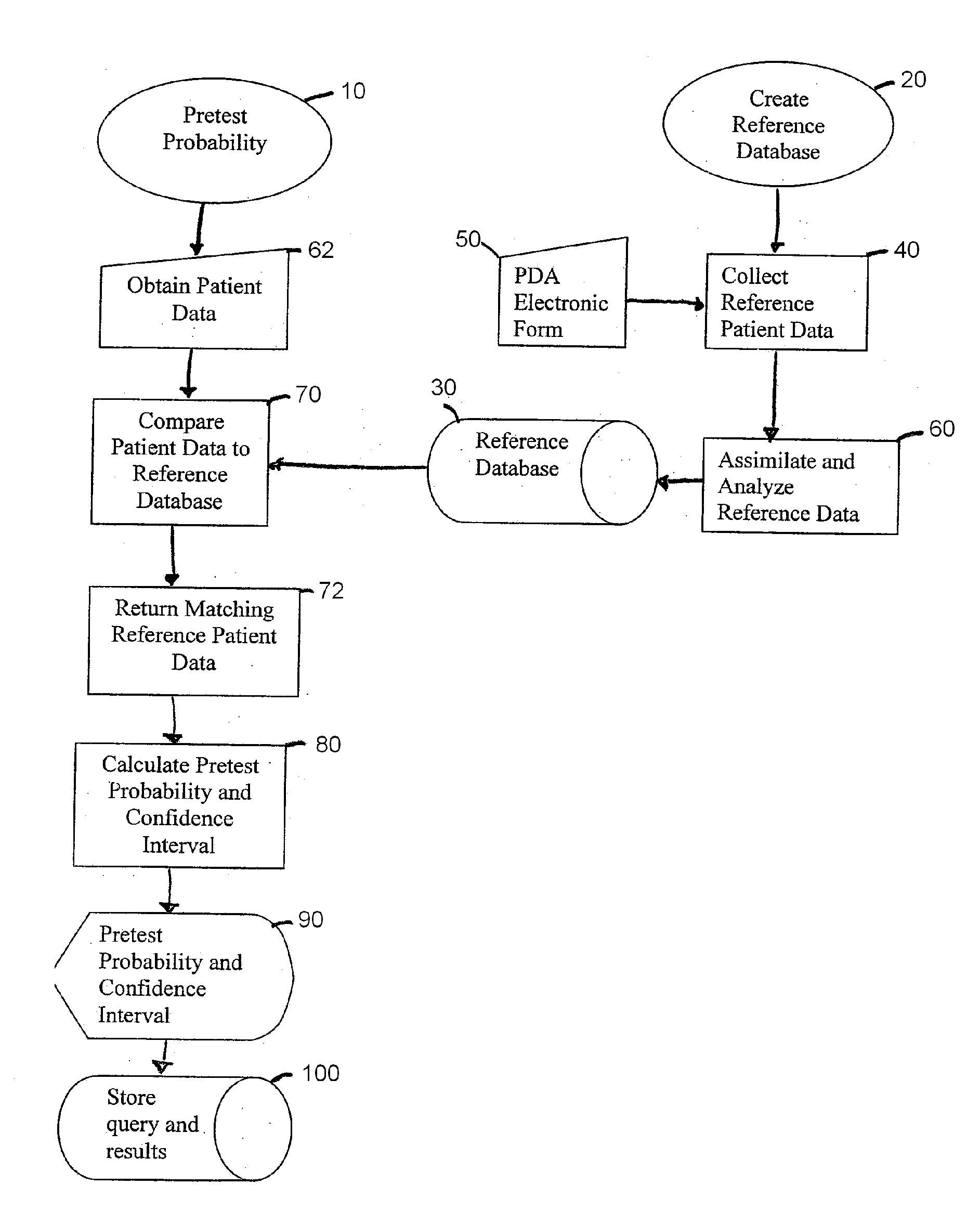System and Method for Determining the Degree of Abnormality of a Patient's Vital Signs
a vital sign and abnormality technology, applied in the field of system and method for determining the degree of abnormality of a patient's vital signs, can solve the problems of increased time and cost required to complete the evaluation, false positive diagnosis, more invasive and potentially dangerous diagnostic studies, etc., and achieve the effect of reducing the likelihood of unnecessary diagnostic testing and reducing the number of false positive diagnoses
- Summary
- Abstract
- Description
- Claims
- Application Information
AI Technical Summary
Benefits of technology
Problems solved by technology
Method used
Image
Examples
Embodiment Construction
[0029] Although this description refers to a pulmonary embolism (PE) as the primary disease, the method and system of the present invention may be used to predict the pretest probability of other disorders, including but not limited to, acute coronary syndrome and subarachnoid hemorrhage. The invention will also be applied to evaluate the probability of certain life-threatening diagnoses or other clinical outcomes in patients with symptoms or complaints, including, anterior chest pain, headache, syncope, symptoms consistent with transient ischemic attack, fever, minor head injury, shortness of breath, seizure, altered mental status, abdominal pain, trauma, dizziness, weakness, high blood pressure, and low blood pressure.
[0030] Referring now to the drawings in which like numerals refer to like parts through out, there is seen in FIG. 1 a flow chart of the method of present invention for determining a particular patient's pretest probability 10 for PE. Prior to starting the process f...
PUM
 Login to View More
Login to View More Abstract
Description
Claims
Application Information
 Login to View More
Login to View More - R&D
- Intellectual Property
- Life Sciences
- Materials
- Tech Scout
- Unparalleled Data Quality
- Higher Quality Content
- 60% Fewer Hallucinations
Browse by: Latest US Patents, China's latest patents, Technical Efficacy Thesaurus, Application Domain, Technology Topic, Popular Technical Reports.
© 2025 PatSnap. All rights reserved.Legal|Privacy policy|Modern Slavery Act Transparency Statement|Sitemap|About US| Contact US: help@patsnap.com



